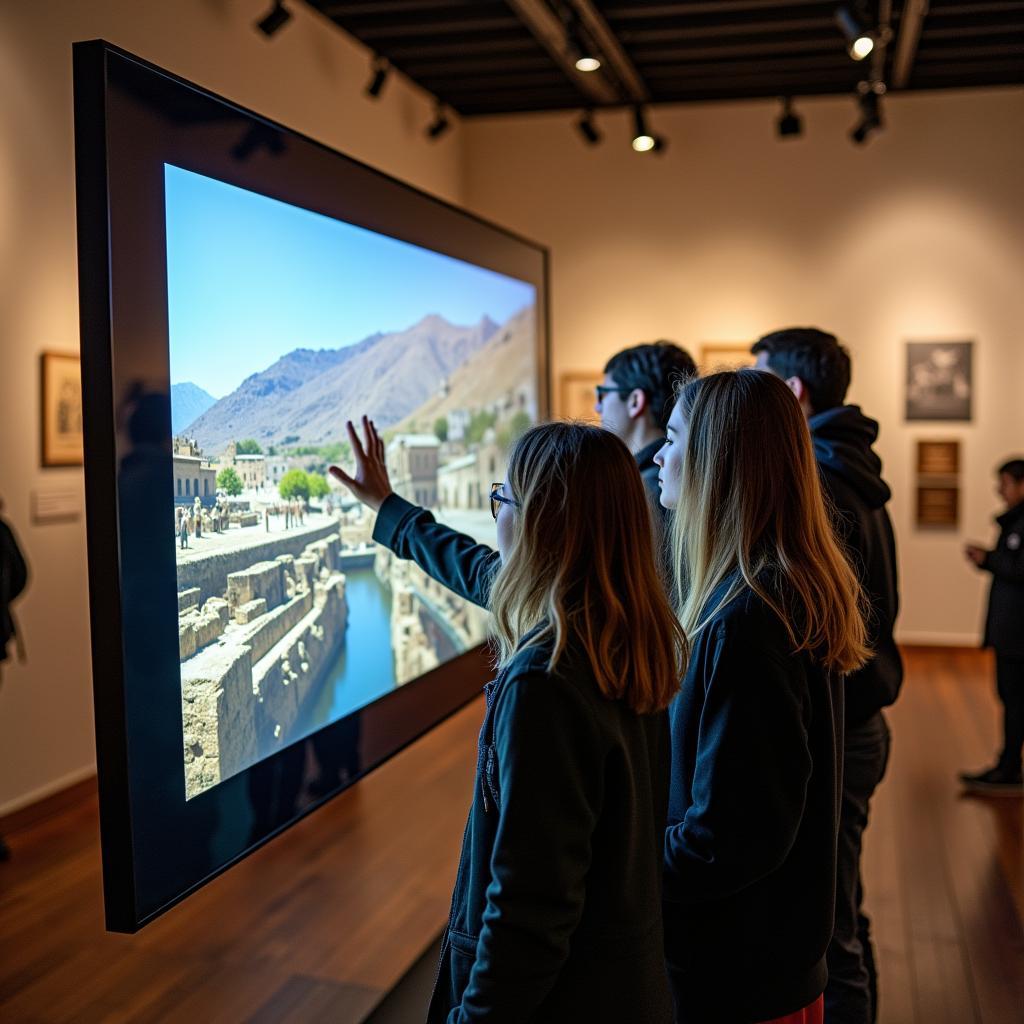The intersection of culture and education is a recurring theme in IELTS Writing Task 2, prompting test-takers to analyze the role of cultural institutions in shaping educational outcomes. This topic often surfaces with varying degrees of frequency, focusing on keywords such as “cultural institutions,” “education,” “museums,” “art galleries,” “libraries,” and “historical sites.”
A cursory glance at recent IELTS exams reveals a notable trend in questions related to this theme. For instance:
1. Some people believe that cultural institutions such as museums and art galleries should focus on preserving traditional art and culture. Others, however, argue that these institutions should primarily showcase modern and contemporary art forms. Discuss both views and give your own opinion. (Frequency: High)
2. Many people believe that visiting cultural institutions like museums and historical sites is an essential aspect of education. Others, however, argue that these visits are primarily for leisure and entertainment. Discuss both views and give your own opinion. (Frequency: Medium)
3. Governments allocate significant funds to support cultural institutions like museums and theatres. However, some people believe that this money could be better spent on other public services such as healthcare and education. To what extent do you agree or disagree? (Frequency: Low)
IELTS Essay Sample
This section will analyze the first question due to its high frequency in recent IELTS exams.
Analyzing the Question
This question requires you to discuss two opposing viewpoints:
- View 1: Cultural institutions should prioritize the preservation of traditional art and culture.
- View 2: Cultural institutions should prioritize showcasing modern and contemporary art forms.
Your task is to present a balanced discussion, exploring the merits of both perspectives, and ultimately stating your own opinion.
Sample Essay
Cultural institutions, such as museums and art galleries, serve as repositories of human creativity and historical narratives. However, the question of whether these institutions should prioritize the preservation of traditional art forms or the exhibition of modern and contemporary art remains a subject of debate. This essay will delve into both sides of this argument before presenting my personal viewpoint.
Proponents of showcasing traditional art argue that it is essential for maintaining cultural identity and historical continuity. By preserving and exhibiting artifacts, paintings, and sculptures from bygone eras, cultural institutions provide a tangible link to the past, fostering an understanding of a nation’s heritage. For example, the British Museum in London houses an extensive collection of Egyptian antiquities, offering visitors a glimpse into the grandeur of ancient Egyptian civilization. Such exhibitions play a vital role in educating younger generations about their cultural roots and fostering a sense of belonging.
Conversely, advocates for modern and contemporary art emphasize its relevance to the present day. They argue that these art forms reflect the evolving social, political, and technological landscape of our times, providing a platform for artists to engage with current issues and challenge societal norms. The Museum of Modern Art (MoMA) in New York City exemplifies this approach by showcasing groundbreaking works of art that have pushed creative boundaries and sparked intellectual discourse. By embracing contemporary art, cultural institutions can engage with a broader audience, including those who find traditional art forms less accessible or relatable.
In my view, while preserving traditional art is crucial, cultural institutions should strive to achieve a balance between the old and the new. By showcasing both traditional and contemporary art forms, these institutions can cater to diverse tastes and provide a comprehensive understanding of artistic expression throughout history and its evolution. Moreover, such a balanced approach can foster dialogue and appreciation for different artistic perspectives, enriching the cultural landscape of a society.
(Word count: 322 words)
Writing Tips:
- Structure: Utilize a clear structure with an introduction, body paragraphs discussing both viewpoints, and a conclusion stating your opinion.
- Vocabulary: Employ a wide range of vocabulary related to art, culture, and education.
- Grammar: Use complex sentence structures and ensure subject-verb agreement.
- Examples: Provide relevant and specific examples to support your arguments.
- Cohesion: Use linking words and phrases to ensure a smooth flow of ideas.
Vocabulary:
- Repositories (noun /rɪˈpɒz.ɪ.tər.iz/): A place where things are stored, often for safety or preservation.
- Narratives (noun /ˈnær.ə.tɪvz/): A spoken or written account of connected events; a story.
- Tangible (adjective /ˈtæn.dʒə.bəl/): Perceptible by touch.
- Antiquities (noun /ænˈtɪk.wɪ.tiz/): Very old objects, especially those made by a human being.
- Bygone (adjective /ˈbaɪ.ɡɒn/): Belonging to or happening in a past time.
Conclusion
The role of cultural institutions in education is a multifaceted topic that can be explored from various angles. When crafting your IELTS essay, remember to analyze the question carefully, structure your response logically, and support your arguments with relevant examples. Utilizing a diverse vocabulary and demonstrating grammatical accuracy will further enhance the quality of your writing.

For further practice, consider these related topics:
- The impact of globalization on cultural institutions.
- The role of technology in preserving cultural heritage.
- The importance of cultural exchange programs in fostering global understanding.